
หน้าหลัก | สุขภาพดี | สุภาพสตรี | การแปลผลเลือด | โรคต่างๆ | ยารักษาโรค |วัคซีน | อาหารเพื่อสุขภาพ
Berries ผลไม้คู่บ้านเพื่อป้องกันโรค
Berries เป็นผลไม้ขนาดเล็กมีสีต่างกันตั้งแต่สีร้ำเงิน แดง และสีม่วง มีรสชาดทั้งหวานและเปรี้ยว สามารถนำมารับประทานสดๆหรือทำเป็นแยม หรือของหว่านอื่น ส่วนประกอบที่สำคัญของ Berries ได้แก่ ใยอาหาร วิตามินซี สารต้านอนุมูลอิสระ polyphenols.ดังนั้นผลไม้กลุ่มนี้จึงมีประโยชน์ป้องกันและลดการเกิดโรคเรื้อรัง
1. Blueberries
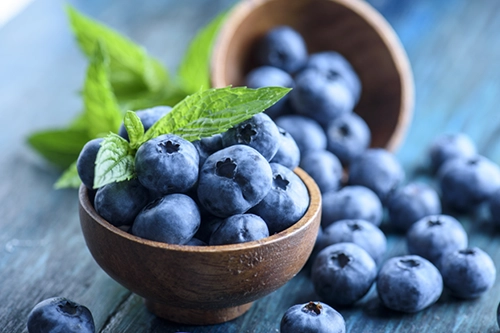
Blueberries เป็นผลไม้ที่นิยมทาน มีวิตามิน เคสูงมาก
Blueberriesหนึ่งถ้วย (148 grams)จะมีสารอาหารดังต่อไปนี้
Blueberries มีสารต้านอนุมูลอิสระชื่อว่า anthocyanins ซึ่งจะลดความเสี่ยงของการเกิดโรคหัวใจโดยกลไก
2. Raspberries
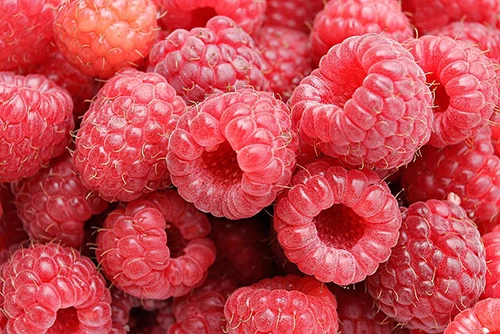
Raspberries เป็นผลไม้ที่ใช้ทำของหวาน และเป็นแหล่งที่มีใยอาหารเป็นจำนวนมาก
Raspberries หนึ่งถ้วย (123 grams)จะมีสารอาหาร
Raspberries มีสารต้านอนุมูลอิสระที่เรียกว่า ellagitannins จะลดปัจจัยเสี่ยงในการเกิดโรคหัวใจ โดยลดความดันโลหิต ลดไขมันในเลือด และลดการอักเสบ
3. Goji berries
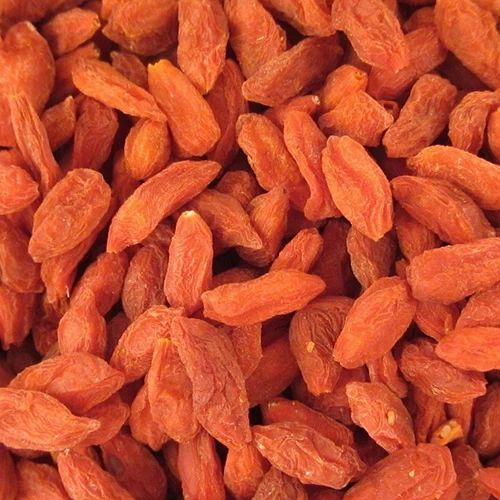
โกจิเบอร์รี่ (เก๋ากี้): สมุนไพรจีนที่ได้รับความนิยมทั่วโลก
โกจิเบอร์รี่ หรือที่คนไทยคุ้นเคยในชื่อ เก๋ากี้ เป็นสมุนไพรจีนที่ได้รับความนิยมอย่างแพร่หลายในประเทศตะวันตก ด้วยคุณค่าทางโภชนาการและประโยชน์ต่อสุขภาพที่หลากหลาย
โกจิเบอร์รี่ปริมาณ 28 กรัม ให้สารอาหารดังนี้:
-
พลังงาน: 98 แคลอรี่
-
ใยอาหาร: 3.6 กรัม
-
วิตามินซี: 15% ของปริมาณที่แนะนำต่อวัน (DV)
-
วิตามินเอ: 42% ของปริมาณที่แนะนำต่อวัน (DV)
-
ธาตุเหล็ก: 11% ของปริมาณที่แนะนำต่อวัน (DV)
นอกจากนี้ โกจิเบอร์รี่ยังมีวิตามินเอและซีแซนทีน (zeaxanthin) สูง ซึ่งทั้งสองชนิดนี้มีความสำคัญต่อสุขภาพดวงตา
งานวิจัยหนึ่งในผู้สูงอายุ 150 คน พบว่าการรับประทานโกจิเบอร์รี่ผสมนมสูตรเฉพาะ 14 กรัมทุกวัน ช่วยลดความเสื่อมของดวงตาที่เกี่ยวข้องกับอายุได้ งานวิจัยนี้ร่วมกับการศึกษาที่คล้ายกันอีกชิ้นหนึ่ง ชี้ให้เห็นว่าการรับประทานโกจิเบอร์รี่สามารถเพิ่มระดับซีแซนทีนในเลือดได้
เช่นเดียวกับเบอร์รี่อื่นๆ อีกหลายชนิด โกจิเบอร์รี่มีสารต้านอนุมูลอิสระกลุ่มโพลีฟีนอล (polyphenols) งานวิจัยหนึ่งพบว่าการดื่มน้ำโกจิเบอร์รี่เป็นเวลา 30 วัน ช่วยเพิ่มระดับสารต้านอนุมูลอิสระในเลือดของผู้สูงอายุชาวจีนที่มีสุขภาพดีได้
การศึกษาอีกชิ้นหนึ่งพบว่าการดื่มน้ำโกจิเบอร์รี่เป็นเวลา 2 สัปดาห์ ช่วยเพิ่มการเผาผลาญและลดขนาดรอบเอวในผู้ที่มีน้ำหนักเกิน
แม้ว่าผลการศึกษาเหล่านี้จะดูดีและมีแนวโน้มที่ดี แต่การศึกษาเหล่านี้ค่อนข้างมีขนาดเล็ก จึงยังจำเป็นต้องมีการวิจัยเพิ่มเติมอีกมาก
สรุป
โกจิเบอร์รี่อุดมไปด้วยสารอาหารที่มีส่วนช่วยบำรุงสุขภาพดวงตาเป็นพิเศษ นอกจากนี้ยังเต็มไปด้วยสารต้านอนุมูลอิสระที่สำคัญอีกด้วย
คุณสนใจอยากทราบข้อมูลเพิ่มเติมเกี่ยวกับประโยชน์ของโกจิเบอร์รี่ด้านไหนเป็นพิเศษไหมคะ? เช่น การนำไปประกอบอาหาร หรือข้อควรระวังในการบริโภค?
4. Strawberries
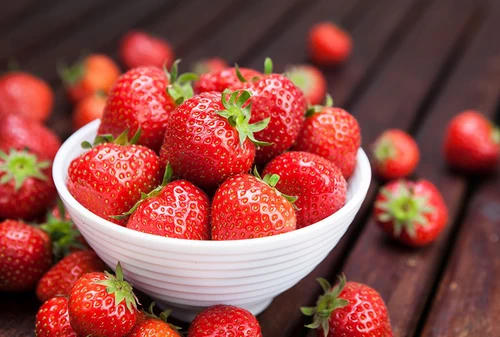
สตรอว์เบอร์รี่: ผลไม้สีแดงสดเปี่ยมคุณประโยชน์เพื่อสุขภาพ
สตรอว์เบอร์รี่ เป็นหนึ่งในผลไม้ตระกูลเบอร์รี่ที่ได้รับความนิยมบริโภคมากที่สุดทั่วโลก และยังเป็นแหล่งวิตามินซีที่ดีเยี่ยมอีกด้วย
สตรอว์เบอร์รี่สดทั้งผล 1 ถ้วยตวง (ประมาณ 144 กรัม) ให้สารอาหารดังนี้:
-
พลังงาน: 46 แคลอรี่
-
ใยอาหาร: 3 กรัม
-
วิตามินซี: 94% ของปริมาณที่แนะนำต่อวัน (DV)
-
แมงกานีส: 24% ของปริมาณที่แนะนำต่อวัน (DV)
ประโยชน์ต่อสุขภาพ
สตรอว์เบอร์รี่มีประโยชน์ต่อสุขภาพหัวใจอย่างมาก จากการศึกษาในผู้หญิงกว่า 93,000 คน พบว่าผู้ที่รับประทานสตรอว์เบอร์รี่และบลูเบอร์รี่มากกว่า 3 หน่วยบริโภคต่อสัปดาห์ มีความเสี่ยงต่อการเกิดภาวะหัวใจวายลดลงกว่า 30%
งานวิจัยอื่นๆ ยังแสดงให้เห็นว่าสตรอว์เบอร์รี่อาจช่วยลดปัจจัยเสี่ยงหลายอย่างของโรคหัวใจ เช่น ระดับคอเลสเตอรอลในเลือด, ไตรกลีเซอไรด์ และภาวะเครียดออกซิเดชัน
นอกจากนี้ สตรอว์เบอร์รี่ยังสามารถช่วยลดการอักเสบได้ โดยการลดสารเคมีที่ก่อให้เกิดการอักเสบในเลือด เช่น IL-1β, IL-6 และ C-reactive protein (CRP)
ยิ่งไปกว่านั้น สตรอว์เบอร์รี่ยังอาจช่วยควบคุมระดับน้ำตาลในเลือด ซึ่งเป็นสิ่งสำคัญในการป้องกันโรคเบาหวาน จากการศึกษาเล็กๆ ชิ้นหนึ่งพบว่า เมื่อผู้มีน้ำหนักเกินรับประทานสตรอว์เบอร์รี่ร่วมกับอาหารที่มีคาร์โบไฮเดรตสูงและไขมันปานกลาง พวกเขามีการตอบสนองของอินซูลินลดลง
สุดท้าย การศึกษาอีกชิ้นหนึ่งแสดงให้เห็นว่า การรับประทานผงสตรอว์เบอร์รี่แช่แข็งแบบแห้ง (freeze-dried strawberry powder) วันละ 2 ออนซ์ (60 กรัม) ช่วยลดภาวะเครียดออกซิเดชันและสารเคมีที่ก่อให้เกิดการอักเสบในผู้ที่มีความเสี่ยงต่อการเกิดมะเร็งหลอดอาหาร
สรุป
สตรอว์เบอร์รี่เป็นแหล่งวิตามินซีที่ดีเยี่ยม และอาจช่วยลดปัจจัยเสี่ยงของโรคหัวใจ รวมถึงช่วยควบคุมระดับน้ำตาลในเลือดได้
คุณอยากรู้เพิ่มเติมเกี่ยวกับการนำสตรอว์เบอร์รี่ไปใช้ประโยชน์ในด้านอื่นๆ ไหมคะ?
5. Bilberries
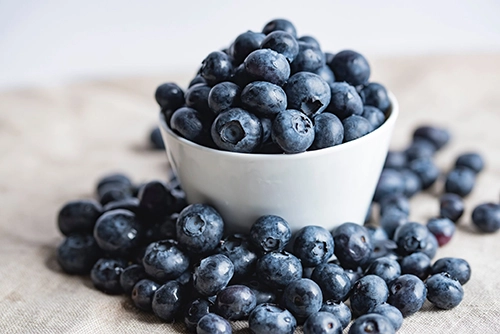
บิลเบอร์รี่: ผลไม้เล็กๆ พลังยิ่งใหญ่จากยุโรป
บิลเบอร์รี่ (Bilberries) มีลักษณะคล้ายกับบลูเบอร์รี่มาก จนหลายคนมักสับสนกัน แต่ความแตกต่างที่สำคัญคือ บิลเบอร์รี่เป็นพืชพื้นเมืองของทวีปยุโรป ขณะที่บลูเบอร์รี่มีถิ่นกำเนิดในทวีปอเมริกาเหนือ
บิลเบอร์รี่ปริมาณ 3.5 ออนซ์ (100 กรัม) ให้สารอาหารดังนี้:
-
พลังงาน: 48 แคลอรี่
-
ใยอาหาร: 2.8 กรัม
-
วิตามินซี: 49% ของปริมาณที่แนะนำต่อวัน (DV)
-
แมงกานีส: 143% ของปริมาณที่แนะนำต่อวัน (DV)
ประโยชน์ต่อสุขภาพ
จากการศึกษาทางวิทยาศาสตร์หลายชิ้นชี้ให้เห็นว่าบิลเบอร์รี่มีประสิทธิภาพในการลดการอักเสบ
มีการศึกษาบางส่วนที่แนะนำว่าการรับประทานบิลเบอร์รี่ หรือดื่มน้ำบิลเบอร์รี่ สามารถช่วยลดการอักเสบในกลุ่มผู้ที่มีความเสี่ยงต่อโรคหัวใจ หรือภาวะเมตาบอลิกซินโดรมได้
นอกจากนี้ การศึกษาในผู้หญิง 110 คน พบว่าการรับประทานบิลเบอร์รี่ติดต่อกันประมาณ 1 เดือน ช่วยลดระดับของเครื่องหมายเอนโดทีเลียม (endothelial markers) ที่เกี่ยวข้องกับการเกิดโรคหัวใจ บิลเบอร์รี่ยังสัมพันธ์กับการลดขนาดรอบเอวได้ 0.5 นิ้ว (1.2 ซม.) และลดน้ำหนักได้ 0.4 ปอนด์ (0.2 กก.) อีกด้วย
อีกการศึกษาหนึ่งพบว่า การรับประทานอาหารที่อุดมไปด้วยบิลเบอร์รี่ ธัญพืชไม่ขัดสี และปลา ช่วยลดระดับน้ำตาลในเลือดในผู้ที่มีภาวะน้ำตาลในเลือดสูง
บิลเบอร์รี่ยังอาจช่วยเพิ่มระดับคอเลสเตอรอลชนิดดี (HDL) และลดคอเลสเตอรอลชนิดไม่ดี (LDL) ได้อีกด้วย
สรุป
บิลเบอร์รี่มีลักษณะคล้ายบลูเบอร์รี่ และมีประสิทธิภาพในการลดการอักเสบ นอกจากนี้ยังอาจช่วยลดน้ำหนักและระดับคอเลสเตอรอลในเลือดได้
คุณสนใจอยากทราบวิธีการนำบิลเบอร์รี่มาปรุงอาหาร หรือข้อควรรู้อื่นๆ เกี่ยวกับบิลเบอร์รี่เพิ่มเติมไหมคะ?
6. Açaí berries
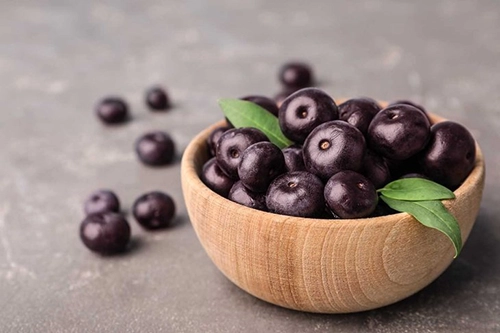
อาซาอิเบอร์รี่: ซูเปอร์ฟู้ดจากป่าอเมซอน อุดมด้วยสารต้านอนุมูลอิสระ
อาซาอิเบอร์รี่ (Açaí berries) เป็นผลไม้ที่เติบโตบนต้นปาล์มอาซาอิ ซึ่งมีถิ่นกำเนิดในภูมิภาคอเมซอนของบราซิล อาซาอิเบอร์รี่กลายเป็นอาหารเสริมเพื่อสุขภาพที่ได้รับความนิยมอย่างมาก เนื่องจากมีสารต้านอนุมูลอิสระสูง
อาซาอิเบอร์รี่แบบบดละเอียด (puree) ปริมาณ 3.5 ออนซ์ (100 กรัม) ให้สารอาหารดังนี้:
-
พลังงาน: 60 แคลอรี่
-
ใยอาหาร: 3 กรัม
โปรดทราบว่าอาซาอิเบอร์รี่มักถูกนำมาบริโภคในรูปแบบอบแห้งหรือฟรีซดราย ซึ่งอาจส่งผลต่อปริมาณสารอาหารได้
ประโยชน์ต่อสุขภาพ
อาซาอิเบอร์รี่เป็นหนึ่งในแหล่งที่ดีที่สุดของสารต้านอนุมูลอิสระกลุ่มโพลีฟีนอล และอาจมีสารต้านอนุมูลอิสระสูงกว่าบลูเบอร์รี่ถึง 10 เท่า
เมื่อบริโภคในรูปแบบน้ำผลไม้หรือเนื้อผลไม้บด อาซาอิเบอร์รี่สามารถเพิ่มระดับสารต้านอนุมูลอิสระในเลือด และลดสารเคมีที่เกี่ยวข้องกับภาวะเครียดออกซิเดชัน
นอกจากนี้ เนื้อผลไม้บดของอาซาอิเบอร์รี่ ยังแสดงให้เห็นว่าช่วยลดระดับน้ำตาลในเลือด อินซูลิน และคอเลสเตอรอลในเลือดของผู้ใหญ่ที่มีน้ำหนักเกินที่บริโภค 200 กรัมต่อวัน เป็นเวลา 1 เดือน
ผลลัพธ์เหล่านี้ยังพบในนักกีฬาด้วย ในการศึกษาหนึ่ง การดื่มเครื่องดื่มผสมน้ำอาซาอิเบอร์รี่ 3 ออนซ์ (100 มล.) เป็นเวลา 6 สัปดาห์ ช่วยลดคอเลสเตอรอลในเลือดและภาวะเครียดออกซิเดชันหลังการออกกำลังกาย ซึ่งอาจช่วยเร่งการฟื้นตัวจากความเสียหายของกล้ามเนื้อได้
สารต้านอนุมูลอิสระในอาซาอิเบอร์รี่ยังอาจช่วยลดอาการของโรคข้อเข่าเสื่อมได้ การศึกษาในผู้ป่วยโรคข้อเข่าเสื่อมพบว่า การดื่มน้ำอาซาอิเบอร์รี่ 4 ออนซ์ (120 มล.) ต่อวัน เป็นเวลา 12 สัปดาห์ ช่วยลดอาการปวดได้อย่างมีนัยสำคัญ และปรับปรุงคุณภาพชีวิตประจำวันให้ดีขึ้น
สรุป
อาซาอิเบอร์รี่มีปริมาณสารต้านอนุมูลอิสระสูง ซึ่งอาจช่วยลดคอเลสเตอรอลในเลือด, ภาวะเครียดออกซิเดชัน และแม้กระทั่งอาการของโรคข้อเข่าเสื่อมได้
คุณอยากรู้เพิ่มเติมเกี่ยวกับการนำอาซาอิเบอร์รี่มาใช้ในอาหาร หรือรูปแบบผลิตภัณฑ์ต่างๆ ที่มีในตลาดไหมคะ?
7. Cranberries
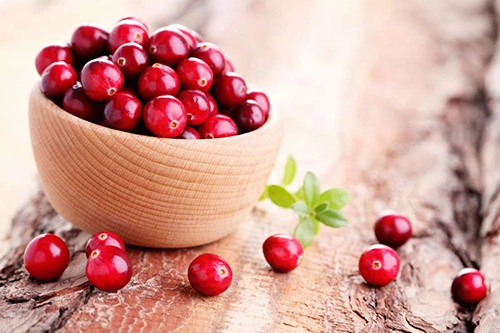
แครนเบอร์รี่: ผลไม้รสเปรี้ยวจี๊ดกับประโยชน์ที่คาดไม่ถึง
แครนเบอร์รี่ เป็นผลไม้ที่มีประโยชน์ต่อสุขภาพอย่างมาก แม้จะมีรสชาติเปรี้ยวจัด จึงไม่ค่อยนิยมรับประทานสดๆ แต่มักจะถูกนำมาแปรรูปเป็นน้ำผลไม้ หรือซอสแครนเบอร์รี่แทน
แครนเบอร์รี่ดิบ 1 ถ้วยตวง (ประมาณ 110 กรัม) ให้สารอาหารดังนี้:
-
พลังงาน: 46 แคลอรี่
-
ใยอาหาร: 3.6 กรัม
-
วิตามินซี: 16% ของปริมาณที่แนะนำต่อวัน (DV)
-
แมงกานีส: 11% ของปริมาณที่แนะนำต่อวัน (DV)
ประโยชน์ต่อสุขภาพ
เช่นเดียวกับผลไม้ตระกูลเบอร์รี่อื่นๆ แครนเบอร์รี่อุดมไปด้วยสารต้านอนุมูลอิสระกลุ่มโพลีฟีนอล อย่างไรก็ตาม แครนเบอร์รี่มักถูกบริโภคในรูปของเครื่องดื่ม ซึ่งในกระบวนการแปรรูปเป็นน้ำผลไม้ สารต้านอนุมูลอิสระส่วนใหญ่จะสูญเสียไป ทำให้น้ำแครนเบอร์รี่มีปริมาณโพลีฟีนอลน้อยกว่าแครนเบอร์รี่สด
ประโยชน์ต่อสุขภาพที่รู้จักกันดีที่สุดของแครนเบอร์รี่คือความสามารถในการช่วยลดความเสี่ยงของการติดเชื้อทางเดินปัสสาวะ (UTIs) คุณสมบัติบางอย่างในแครนเบอร์รี่ช่วยป้องกันไม่ให้เชื้อแบคทีเรีย E. coli เกาะติดกับผนังกระเพาะปัสสาวะหรือทางเดินปัสสาวะ ซึ่งช่วยลดความเสี่ยงของการติดเชื้อ การศึกษาจำนวนมากแสดงให้เห็นว่าการดื่มน้ำแครนเบอร์รี่หรือการรับประทานผลิตภัณฑ์เสริมอาหารแครนเบอร์รี่สามารถลดความเสี่ยงของ UTI ได้
น้ำแครนเบอร์รี่ยังอาจช่วยลดความเสี่ยงของการติดเชื้ออื่นๆ ได้เช่นกัน H. pylori เป็นแบคทีเรียชนิดหนึ่งที่อาจทำให้เกิดแผลในกระเพาะอาหารและมะเร็งกระเพาะอาหารได้ การศึกษาหลายชิ้นแสดงให้เห็นว่าน้ำแครนเบอร์รี่สามารถป้องกันไม่ให้ H. pylori เกาะติดกับผนังกระเพาะอาหาร ช่วยป้องกันการติดเชื้อ และทำหน้าที่เป็นทางเลือกในการรักษาร่วมกับยาปฏิชีวนะได้
นอกจากนี้ น้ำแครนเบอร์รี่ยังแสดงให้เห็นถึงประโยชน์หลายประการต่อสุขภาพหัวใจ การศึกษาจำนวนมากพบว่าการดื่มน้ำแครนเบอร์รี่สามารถช่วยลด:
-
คอเลสเตอรอล
-
ความดันโลหิต
-
ภาวะเครียดออกซิเดชัน
-
ภาวะหลอดเลือดแดงแข็งตัว
อย่างไรก็ตาม ควรหลีกเลี่ยงน้ำแครนเบอร์รี่ที่มีน้ำตาลเติมในปริมาณมาก และเลือกดื่มชนิดที่ระบุว่าเป็นน้ำผลไม้ 100% แทน
สรุป
แครนเบอร์รี่และน้ำแครนเบอร์รี่สามารถช่วยลดความเสี่ยงของการติดเชื้อทางเดินปัสสาวะและการติดเชื้อในกระเพาะอาหาร และอาจเป็นประโยชน์ต่อสุขภาพหัวใจ อย่างไรก็ตาม ควรหลีกเลี่ยงน้ำผลไม้ที่มีน้ำตาลเติมในปริมาณมาก
คุณสนใจข้อมูลเพิ่มเติมเกี่ยวกับวิธีการเลือกซื้อแครนเบอร์รี่ หรือการนำไปใช้ประโยชน์ในอาหารอื่นๆ ไหมคะ?
8. Grapes

องุ่น: ผลไม้มากประโยชน์จากผิวถึงเมล็ด
องุ่น เป็นผลไม้ที่ได้รับความนิยมอย่างแพร่หลาย ไม่ว่าจะบริโภคสดทั้งผล หรือแปรรูปเป็นน้ำองุ่น ไวน์ ลูกเกด หรือน้ำส้มสายชู
องุ่นสดทั้งผล 1 ถ้วยตวง (ประมาณ 151 กรัม) ให้สารอาหารดังนี้:
-
พลังงาน: 104 แคลอรี่
-
ใยอาหาร: 1.4 กรัม
-
วิตามินซี: 5% ของปริมาณที่แนะนำต่อวัน (DV)
-
วิตามินเค: 18% ของปริมาณที่แนะนำต่อวัน (DV)
ประโยชน์ต่อสุขภาพ
เปลือกและเมล็ดองุ่น เป็นแหล่งชั้นเยี่ยมของสารต้านอนุมูลอิสระกลุ่มโพลีฟีนอล การศึกษาบางชิ้นแสดงให้เห็นว่าสารสกัดโพลีฟีนอลจากเมล็ดองุ่นสามารถช่วยลดทั้งความดันโลหิตและอัตราการเต้นของหัวใจได้ อย่างไรก็ตาม งานวิจัยเหล่านี้ส่วนใหญ่มีขนาดเล็ก และการศึกษาอื่นๆ ยังคงยืนยันว่าผลของโพลีฟีนอลต่อความดันโลหิตยังไม่ชัดเจน
การศึกษาเชิงสังเกตขนาดใหญ่พบว่า การรับประทานองุ่นหรือลูกเกด 3 ครั้งต่อสัปดาห์ มีความสัมพันธ์กับการลดความเสี่ยงของโรคเบาหวานชนิดที่ 2 ลง 12%
อีกการศึกษาหนึ่งพบว่า การรับประทานองุ่น 17 ออนซ์ (500 กรัม) ต่อวัน เป็นเวลา 8 สัปดาห์ ช่วยลดคอเลสเตอรอลในเลือดและภาวะเครียดออกซิเดชันในผู้ที่มีคอเลสเตอรอลสูง
สุดท้าย น้ำองุ่น อาจเป็นประโยชน์ต่อสุขภาพสมองได้ด้วย การทดลองทางคลินิกขนาดเล็กในผู้หญิง 25 คน พบว่าการดื่มน้ำองุ่นคอนคอร์ด 12 ออนซ์ (355 มล.) ทุกวัน เป็นเวลา 12 สัปดาห์ ช่วยให้ความจำและประสิทธิภาพในการขับขี่ดีขึ้นอย่างเห็นได้ชัด
สรุป
องุ่น โดยเฉพาะส่วนเปลือกและเมล็ด อุดมไปด้วยสารต้านอนุมูลอิสระ อาจช่วยลดคอเลสเตอรอลและความเสี่ยงโรคเบาหวานชนิดที่ 2 รวมถึงเป็นประโยชน์ต่อสุขภาพสมอง
สรุปภาพรวม: เบอร์รี่...สุดยอดผลไม้เพื่อสุขภาพ
ผลไม้ตระกูลเบอร์รี่เป็นหนึ่งในอาหารที่ดีต่อสุขภาพที่สุดที่คุณสามารถรับประทานได้ พวกมันมีแคลอรี่ต่ำ แต่มีใยอาหาร วิตามินซี และสารต้านอนุมูลอิสระสูง
เบอร์รี่หลายชนิดมีความเชื่อมโยงกับประโยชน์ต่อสุขภาพหัวใจมากมาย เช่น การลดความดันโลหิตและคอเลสเตอรอล รวมถึงลดภาวะเครียดออกซิเดชัน
นอกจากนี้ เบอร์รี่ยังอาจช่วยลดความเสี่ยงของโรคเบาหวานชนิดที่ 2 และเป็นทางเลือกที่ดีเยี่ยมสำหรับขนมขบเคี้ยวที่มีน้ำตาลเติม
ลองพยายามรับประทานเบอร์รี่หลายๆ ชนิด สัปดาห์ละสองสามครั้ง คุณสามารถนำมันไปใส่ในสลัด หรือใช้เป็นท็อปปิ้งอาหารเช้าเพื่อสุขภาพที่ดีได้เลยค่ะ
